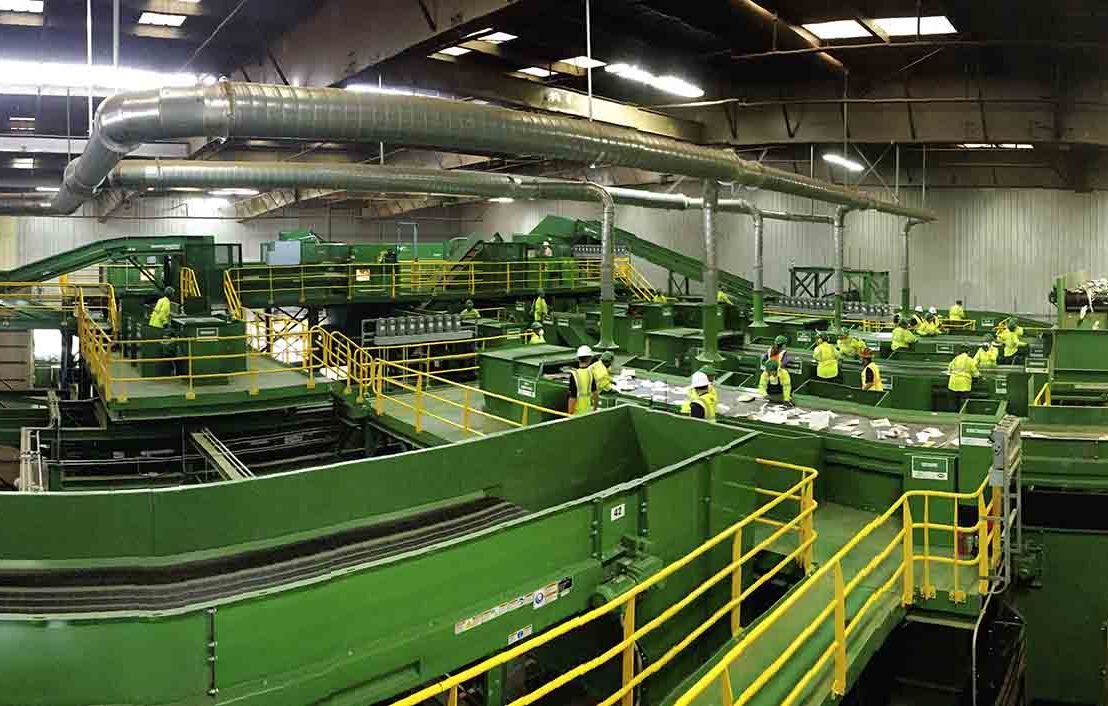
MSW Sorting Plant
W2E+ is a project developer, operator and owner focused on projects that convert MSW and other select waste streams to valuable products, therein eliminating the negative issues with waste disposal. We integrate performance proven, advanced technologies into operating systems when diverting MSW from landfill and select modules of the MSW integrated system when processing a select waste stream such as mixed plastic or food waste.
Pre-processing
Material Recycling Facility (MRF).
The MRF, which will be utilized only for MSW diversion facilities, separates material streams that makeup MSW so that they may be processed by the appropriate Module. The MRF also removes materials suitable for recycling and other items not suitable for further processing.
Our Approach
Our approach to MSW is unique. We have selected numerous technologies each of which is delivered on skids with quick interconnection capability. Each module has been designed to perform with a select range of waste materials (for instance anaerobic digestion is designed to work with high moisture content materials).
IN NO CASE DO WE UTILIZE INCINERATION.
With MSW we integrate the select, advanced technologies into an operating system that, without toxic emissions we convert the carbon-based materials to various forms of renewable energy plus other beneficial products including:
Renewable Natural Gas (RNG)
Electrical power
Liquid fuels
Synthetic chemicals
Industrial carbon
Organic fertilizer
Clean water
Utilizing by-products from our integrated processes including organic fertilizer, CO2, waste heat, and clean water we intend to grow vegetables, herbs, and in some cases fish & shrimp in environmentally controlled growing systems (ECGS).
If an accompanying ECGS is not built the waste heat will be utilized to produce additional power, the organic fertilizer will be captured and sold.
Plastic Pyrolysis Plant Graphic
Pyrolysis is a common technique used to convert plastic waste into energy, in the form of solid, liquid and gaseous fuels.
Pyrolysis is the thermal degradation of plastic waste at different temperatures (300–900°C), in the absence of oxygen, to produced liquid oil. Different kinds of catalysts are used to improve the pyrolysis process of plastic waste overall and to enhance process efficiency. Catalysts have a very critical role in promoting process efficiency, targeting the specific reaction and reducing the process temperature and time.
Individual Waste Materials
We have selected technologies that can be integrated into an operating system that converts MSW to valuable products or the modules that makeup the MSW system can be individually operated. For instance, we can independently process the following waste streams:
· Mixed waste plastic
· Food waste & yard debris
· Dairy, chicken and pig manure
· Various wastewater solids
TECHNOLOGIES…
When diverting MSW from landfills no technology that processes the total MSW composition with a single processing system, such as mass incineration is able to optimize the conversion of MSW to valuable products nor will it provide the return on investment that our integrated system will provide.
When processing MSW the first step is to pass the MSW through a Multiple Recovery Facility (MRF) that will provide mechanical & hand sorting of MSW into the following groups of materials that will be processed by a specific technology as follows:
Food waste and yard debris will be processed with a proprietary Anaerobic Digestion system
Non-recyclable mixed plastics will be processed by a dedicated pyrolysis unit
Non-recyclable paper, cardboard, leather, textiles and rubber will be processed by a dedicated pyrolysis unit
Extensive data on each of the above processing systems will be made available to qualified parties.
The MRF will also sort the materials that are readily and profitably recycled including:
Select grades of plastic
Select grades of paper and cardboard
Metals
Glass
Waste Plastic Pyrolysis System
In pyrolysis, a feedstock such as waste plastic is heated in a low-oxygen environment and, instead of burning, breaks down into a mix of simpler hydrocarbons. Tweaking the reaction conditions—such as temperature, pressure, or use of a catalyst—allows operators to get various product mixtures.
Waste Tires
Tires that are simply thrown away are a serious environmental problem. The sheer volume of tires discarded each year—almost 300 million tires in the United States alone—makes safe disposal difficult.
Discarded tires are an ideal breeding ground for mosquitoes and other disease-carrying animals because their hollow, rounded shape holds water for a long time. When disposed of in a tire stockpile, used tires are often burned outdoors, which creates an ugly black smoke that contains toxic compounds (due in part to the oil and other products used in manufacturing tires).
Tires are also a problem in landfills: their hollow, rounded shape takes up valuable shape in landfills. Additionally, tires often don't stay buried. They have the unfortunate habit of trapping gases like methane and then "bubbling up" through landfills, ripping through landfill liners in the process.




